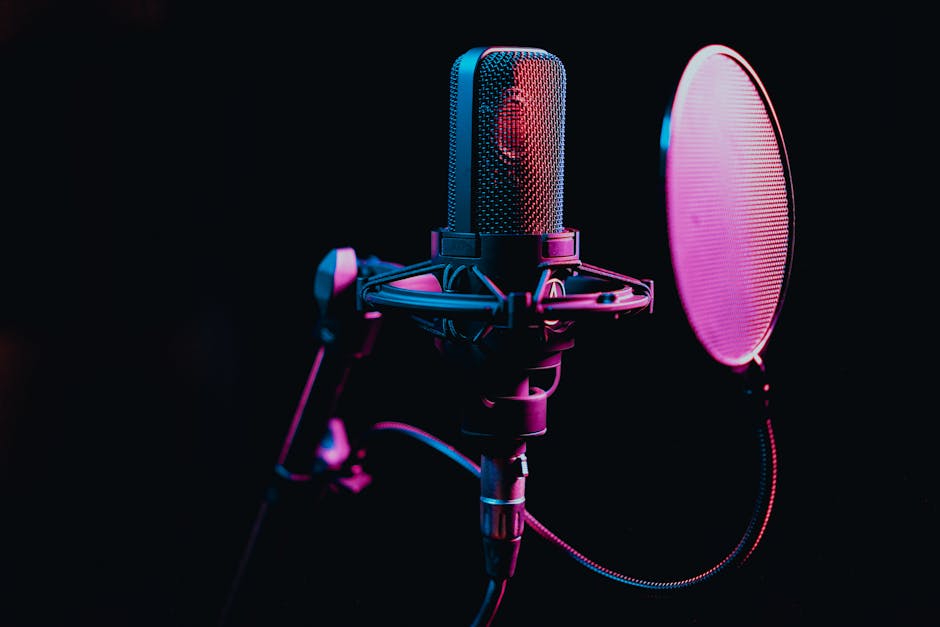My Guide to Understanding Audio File Formats for Podcasting (mp3, Wav).
My Guide to Understanding Audio File Formats for Podcasting (mp3, Wav)
Stepping into the world of podcasting is exciting! You’ve got your microphone, your topics are lined up, and you’re ready to share your voice with the world. But then you hit a snag: audio file formats. MP3? WAV? What’s the difference? Which one should you use? If these questions have ever made your head spin, you’re in the right place. As someone who’s navigated these very waters, I’ve put together this guide to cut through the jargon and give you a crystal-clear understanding of MP3 and WAV, specifically tailored for your podcasting journey. My aim is to empower you to make informed decisions that ensure your listeners get the best possible audio experience without unnecessary headaches for you. Understanding these fundamental formats isn’t just about technical know-how; it’s about safeguarding the quality of your content from capture to listener’s ear, ensuring your message resonates clearly.
Decoding the Core Difference: Lossy MP3 vs. Lossless WAV for Podcasters
At the heart of choosing between MP3 and WAV lies a fundamental concept: how they handle your audio data. Think of it like this: when you record your voice, your microphone captures a vast amount of sound information. How that information is stored and processed defines the file format.
The Uncompressed Purity of WAV: Your Original Audio Blueprint
WAV (Waveform Audio File Format) is like the raw, untouched photograph straight out of a high-end camera. It stores audio data in an uncompressed, lossless format. This means that every single detail, every nuance of your recording, is preserved exactly as it was captured. There’s no information thrown away, no compromises made. For podcasters, this makes WAV the gold standard for recording and editing because:
- Maximum Fidelity: It retains the highest possible audio quality, crucial for capturing your voice or music with absolute clarity. This includes preserving the full frequency range and dynamic nuances of your original recording, which is vital for professional-sounding podcasts.
- Editing Flexibility: When you edit a WAV file, you’re working with all the original data. This means more precise cuts, smoother fades, and superior processing without introducing artifacts that can arise from re-editing compressed files. Each edit you make is applied to the pristine source, preventing cumulative degradation.
- Archival Integrity: If you want to keep a pristine master copy of your podcast episodes for future use or re-editing, WAV is your best friend. It serves as an unalterable, high-quality archive of your work, ensuring you can always return to the source if needed.
The downside, as you might guess, is file size. Uncompressed audio files are massive. A 30-minute podcast recorded in WAV could easily be several hundred megabytes, sometimes even gigabytes (e.g., a stereo 44.1 kHz, 16-bit WAV file consumes about 10.5 MB per minute, meaning a 30-minute episode would be over 300 MB). This makes them impractical for online distribution due to bandwidth constraints and listener download times.
The Smart Compression of MP3: Your Podcast’s Travel-Friendly Format
MP3 (MPEG-1 Audio Layer III), on the other hand, is a lossy compressed format. Imagine taking that high-resolution photo and carefully removing all the pixels that your eye probably won’t notice, or that are redundant. MP3 does something similar with audio. It uses sophisticated psychoacoustic algorithms to identify and discard audio information that is generally inaudible to the human ear, like very high frequencies, very low frequencies, or sounds masked by louder ones. This process significantly reduces file size.
The key word here is “lossy.” Once that information is discarded, it’s gone forever. You can’t get it back. However, the brilliance of MP3 is that this “loss” is often imperceptible to the average listener, especially when encoded at a good bitrate (more on this soon). For podcasters, MP3 is indispensable for:

- Efficient Distribution: Small file sizes mean quicker downloads for your listeners and lower bandwidth costs for your podcast host. A 30-minute episode at 128 kbps stereo might be around 28-30 MB, a fraction of its WAV counterpart.
- Universal Compatibility: MP3 is the most widely supported audio format across virtually all devices and platforms, ensuring your podcast reaches everyone, regardless of their playback device or software.
- Streaming Friendliness: Smaller files stream more reliably, even on slower internet connections, providing a seamless listening experience and reducing buffering for your audience.
The Podcaster’s Workflow: When to Embrace WAV, When to Export MP3
Understanding the technical differences is one thing; applying them practically in your podcast production workflow is another. This section outlines the strategic use of WAV and MP3 throughout your creative process.
Capturing Pristine Sound: The WAV-First Recording Strategy
Your podcast’s journey to your listeners begins with recording. This is the absolute most critical stage for audio quality. Always, always, always record your raw audio in a lossless format, ideally WAV. Some digital audio workstations (DAWs) might default to their own proprietary lossless formats, which is also perfectly fine. The goal here is to capture as much original sound information as possible from your choosing the right microphone. Think of it as laying down the highest quality foundation for your audio house.
- Why WAV? Any imperfections or lack of detail introduced at the recording stage cannot be fixed later. Recording in WAV ensures you have the cleanest, most detailed source material to work with.
- Typical Settings: Common settings for podcast recording are 44.1 kHz (kilohertz) sample rate and 16-bit or 24-bit depth. While 24-bit offers greater dynamic range, 16-bit is perfectly adequate for most spoken-word podcasts and aligns with CD quality.
- Practical Tip: Before you even hit record, check your DAW’s settings to confirm it’s set to record in WAV or an equivalent lossless format.
Precision in Post-Production: Editing with Uncompressed Files
Once your raw audio is captured, the next stage is effective podcast editing tips. Whether you’re removing filler words, adding music, applying noise reduction, or leveling audio, working with WAV files gives you the greatest flexibility and prevents the introduction of compression artifacts. Every time you save or re-render a lossy file (like an MP3), a new layer of compression is applied, potentially degrading the audio further. This is known as “generation loss.”
- Avoid Multiple Compressions: If you were to edit an MP3, save it, then reopen and re-edit it, and save it again, you’d be compressing the audio multiple times, leading to a noticeable drop in quality.
- Seamless Processing: Effects like EQ, compression, and reverb will sound cleaner and more natural when applied to uncompressed audio.
- Project Files: Most DAWs save your project as a collection of settings and references to your original WAV files, not by re-encoding them. This ensures your working environment maintains maximum quality.
The Final Polish: Mastering for Optimal MP3 Export
After all your edits are complete and your audio is sounding polished, it’s time for the final mastering stage. This is where you prepare your track for distribution, often involving final loudness adjustments (normalization and limiting) to meet industry standards (like LUFS – Loudness Units Full Scale). Only after this final mastering is done should you consider exporting to MP3.
- Master WAV First: It’s a good practice to export a master WAV file of your completed, fully mixed and mastered episode. This serves as your high-quality archive (your “gold master”) before any lossy compression.
- One-Time MP3 Export: From this master WAV, you will then create your MP3 file for distribution. This ensures that the MP3 compression happens only once, at the very end of your production chain, minimizing quality loss.
Releasing Your Episode: The MP3 Distribution Standard
Finally, your episode is ready for the world! This is where MP3 shines. You’ll upload your carefully compressed MP3 file to your podcast hosting platforms, which then distribute it via your podcast RSS feeds to directories like Apple Podcasts, Spotify, and Google Podcasts. The small file size is crucial here for quick downloads and efficient streaming.
- Host Recommendations: Always check your podcast host’s recommended MP3 bitrate and settings. They often have guidelines to ensure optimal performance on their platform and for listeners.
- Global Reach: The ubiquitous nature of MP3 guarantees that virtually every podcast app and device can play your episode without issue.
Crafting the Perfect MP3: Advanced Encoding Considerations
When it comes to MP3s, not all files are created equal. The encoding process involves choices beyond just bitrate that can further optimize your podcast for listener experience and file efficiency.
Navigating Bitrates: Finding the Sweet Spot for Your Podcast’s MP3
The “quality” of an MP3 file is largely determined by its bitrate, measured in kilobits per second (kbps). Think of bitrate as the amount of audio data flowing per second. A higher bitrate means more data, less compression, and thus better sound quality, but also a larger file size. A lower bitrate means more compression, smaller file size, but potentially noticeable quality degradation.
For podcasting, here’s a common range and what it means:
- 64 kbps (




Post Comment